SIKA Valmé is an interdisciplinary artist based in Montreal, whose aural and visual creations highlight the power of love, courage, and friendship. Delivered with an unflinching honesty that stems from her personal, lived experience as a queer person of colour, Valmé’s latest illustrations offer uncompromising self-expression and a deep self-reflection shaped by her overlapping identities. Through her work, Valmé emphasizes pride, inner-strength, spirituality, and valorization of self in response to marginalization.
Sofia Misenheimer: You engage in a such a diverse range of arts, from illustration, to music production, to performance, and the list goes on. How did you begin your varied artistic practices?
SIKA Valmé: Growing up in Haiti, I would draw in my free time. I guess it was a way for me to release all the thoughts in my head, before my poetry turned into lyrics. Later, I studied studio art in college—sculpture, drawing, painting, serigraphy, printmaking, even theatre—and got a theatre set design degree here in Montreal, although music was the medium I was practicing at the time. I’m always trying to articulate an expression that can combine the things I know how to do. I ask myself how I can do what folks like Fever Ray (Sweden), or Jónsi (Iceland) do, but give it my warmth and Creoleness, because I come from the sun. I haven’t found the recipe yet, but I’m trying to conceive a way of incorporating musical performance, event planning, and the aesthetic of drawing into video projection. I have so many ideas.
I recently revisited your 2012 EP, Colour Your Walls, and it feels like you use the album to paint with the notes and lyrics. Your overlapping passion for music and visual art is evident in the album, which also comes across in your artwork. Is your artistic approach similar across media?
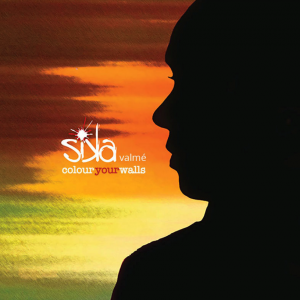
It is a continuing flow which has matured since the album. I don’t really think about it. My expression comes out in a way that represents the way my brain works, what I know how to do, and what I like. But when I think about creating something, I really look at what is offered around me and what isn’t. I look at what bores me, what inspires me, and I try to see what I can bring that will nourish me. I’m really selfish in that way. I think it has to do something for me first, as it comes from me and it’s my story. Then, I find ways to open it up to the receiver and the art field.
For the album, I remember thinking about the colour tones for the album cover and the experience of inside the package, and the graphics. Then I literally compared it to the kind of chords that I was using in my music. My music is not depressing even though lyric-wise it might be interpreted that way. At the same time, it’s not super energetic or happy pop either. It’s just right in the middle to give you room to think and to feel. I tried to do the same thing with the colours I used for that project. I didn’t go for dark or bright fluorescent tones. I stuck to neutral, sunlit shades, like deep mustard. There’s a hopefulness in them, plus contrast is everything!
I always think about what we can learn from whichever circumstances we’re dealt and try to take the positive out of them and then share what is learned. This comes out in my artistic expression. It’s like reading a book based on what someone went through. Kind of like what yogis do. They tell you their “formula” and then you apply it. That’s my deal.
What do you consider your story?
If my artistic expression stems from my story, then I would say it comes from growing up an only child in Haiti and being gender non-conforming in a country like that. I lost my father at a very young age and was encouraged to play tennis competitively for many years. So, I had to have the discipline to commit to one thing and continue to overcome… I also know the experience of migration. There’s a combination of those elements my story that you can kind of pick bits and pieces from to understand the expression.
Was there something about the Alive & Well issue of Art/iculation that appealed to you then?
It got me thinking about the past few years of my life in Montreal when I took a break from music and went back to school after eight years. I also went through a break-up and non-nourishing relationships. All of these things happened at the same time and I felt like I was losing ground.
After going back to school, I was the only artist in my Master’s program in project management. I felt disconnected and isolated. These experiences and trying to overcome them had consequences on my body. I developed anemia and insomnia. I wasn’t working out as much or eating well. It took a physical and mental toll. I was losing my memory. I wasn’t recognizing myself anymore until, I don’t know, I just made a plan for myself and I fixed my activities. I fixed everything. And then I just went back to the person I’m supposed to be and these artworks emerged.
Tell me about your pieces.
They’re recent pieces I drew during the period of disconnect I mentioned earlier. I had a really deep craving to create again, but to do it in a way that was easy, smooth for me. I knew that music wouldn’t do, because it takes a lot of effort to find musicians and a space for playing. I knew the answer had to come from inside, so instead, I started to draw.
In “My Gal” I imagine companionship, friendship, and joint ventures. The two women are having tea, a delicacy, with wine and cheese—all expensive goods that aren’t necessarily associated with folks of colour. The désinvolture suggests “are we even supposed to care?” The women are coming out of the frame. These are the choices I’ve made for this piece based on what I was talking about earlier: strength, overcoming, resilience, positivity, and just believing that there is so much wealth in marginalization. Just go ahead and claim what’s yours! That’s where it comes from.
Do you see yourself in this scene?
Yes, but I don’t see the other gal often. It’s so rare. This is almost like a dream that I drew. I’m kind of a loner *laughs*. There’s a lot of negative thinking from other artists I know who are queer and Black. That narrative doesn’t inspire me at all though. It’s not that problems don’t exist, but I don’t get energy from that. So unfortunately, I don’t think I’ve lived the narrative in “My Gal” enough.
I was curious about the butterfly. Does it represent heart fluttering or excitement or emotion? What were you thinking when you drew it?
For me, it represents rebirth, transformation, and désinvolture. But there’s so much attached to the butterfly. Maybe heart pounding, if there’s something going on with these two? *laughs* Yes, perhaps that as well. It’s not a fixed thing though, it’s up for interpretation.
There’s knowledge inside us, especially those of us who are queer and gender non-conforming. Marginalized folks have the most richness to share with the world.
Can you tell me a little bit about “Stretched Strength”?
Starting from the character’s feet and working up, I was thinking of several traditional patterns from Africa and Haiti. The design on the shin guards they’re wearing, an homage to Haitian soccer as a team sport, comes from what you see on ‘tap tap,’ or intricately decorated Haitian bus-taxis. There’s also some influence from African batiks. You can see that on the hair too. A lot of people have asked me what’s going on with the hair? *laughs* Why is she drawing blonde white folks? And I’m always so surprised that people read that. It makes me sad, but that’s OK. The world is influencing a lot of us to see that. I just didn’t colour in the skin this time, and the yellow is the sun reflecting rays of light from the person’s hair. When you think about Black folks’ hair, if it’s super curly it’s because they have a relationship with the sun. We spend our lifetime looking for the light and there’s nothing more powerful than the sun in my view.
All of the dots surrounding the character are meant to represent what we can’t see, but that are so present if we pay attention. They’re all the opportunities, circumstances, energies, people, spirits, or angels, around you that you cannot see. They’re non-palpable realities, if you will.
Also, I want to clarify that the person in this piece isn’t falling. They’re stumbling, trying to stand, as a way of showing the human experience. Their face reflects that effort. The plant on the side shows life and time passing. I visualized veins and blood within the body, because they play a role in how we feel. Blood quality influences energy levels, how we present ourselves, and how sharp our brain is at any given moment. I presented this piece at the Symboles de Resistance art show earlier this year, where someone pointed out that Black people are more likely to have anemia. I had no clue, but it makes sense that I would show that, because my work comes from me first. It’s then up for others to relate and see themselves in my work too.
Does that hold true for “In The Search of Home”?
Yes, definitely. This piece is a reaction. I was looking for inspiration, so I turned to food. I didn’t want to draw people, but rather what makes them tick. I didn’t know where to start until I went to the Allied Media conference in Detroit. There were people from around the world presenting on what they do and I didn’t want to just sit in a room and listen to someone talk or watch a PowerPoint presentation. So, instead, I attended a food preparation workshop given by a queer, first-generation Cambodian-American chef. She was born in New York, but her whole family are refugees. Her workshop really gave me the answers I needed to create and I told her so. She’s always looking to connect with her culture collectively through food. It was interesting to make food with her and talk with everyone else there. There was so much discussion while we worked.
I went through her menu and looked up the different chosen ingredients—all from the East and the South. I picked some and added others that come from my own cultural background. Tamarind and breadfruit: I grew up with those trees at home in Haiti. There’s banana leaf for plantain, galangal from the ginger family, and kaffir leaves. The only thing from the West is broccoli, which grows a lot in Italy. Coconut milk connects them all. These ingredients tell a story of the East, the Tropics, and African countries. For me, access to food from home is like teleportation! *laughs*
That’s powerful. You’re following these ingredients, like a trail of breadcrumbs, in search of home. A strong sense of connection, self-reliance, and belonging really permeates your work. I see them as overlapping themes that put these pieces in conversation. What are you hoping that viewers take away from these works?
I think it’s all about the human experience once again, because during my journey, until today, I’ve experienced different ways of sustaining and healing myself both spiritually and physically. These all bring different sensations. Essentially I want viewers to think beyond, to look inside, to see and be themselves. It’s as simple as that.
Do you mean through self-care?
Yes, but more that self-expression and self-realization are forms of self-care. There’s knowledge inside us, especially those of us who are queer and gender non-conforming. Marginalized folks have the most richness to share with the world. So this is why it’s important to look inside, because there are so many stories that will feed creativity and content to share. The more marginalized you are, the richer you are. It’s about knowledge. When you are in the margin, every single thing that you do, you have to think and be creative about. Every single thing you do is something that you have to think about and be creative about. You have to make it work in a system that does not work for you, so your brain is constantly striving. That’s all. You can’t become complacent, if you want to survive. With regard to the theme of Alive & Well, it’s a matter of finding your medium and putting your knowledge into your medium.
How will you do that moving forward? What’s in the works for you?
Music is still on my mind. For now, I have an art residency in Nova Scotia coming up in June. It’s on Great Island with other artists in a remote area. Getting back to nature outside of Montreal is a good starting point to make work. I plan to produce content that I can include in a new project merging my music and my artwork with projections. In the meantime, whether on the administrative or creative side of things, I’m always open to hearing ideas for collaborative projects.
Follow SIKA’s progress and stay up-to-date with her work at http://www.coloursandsound.ca



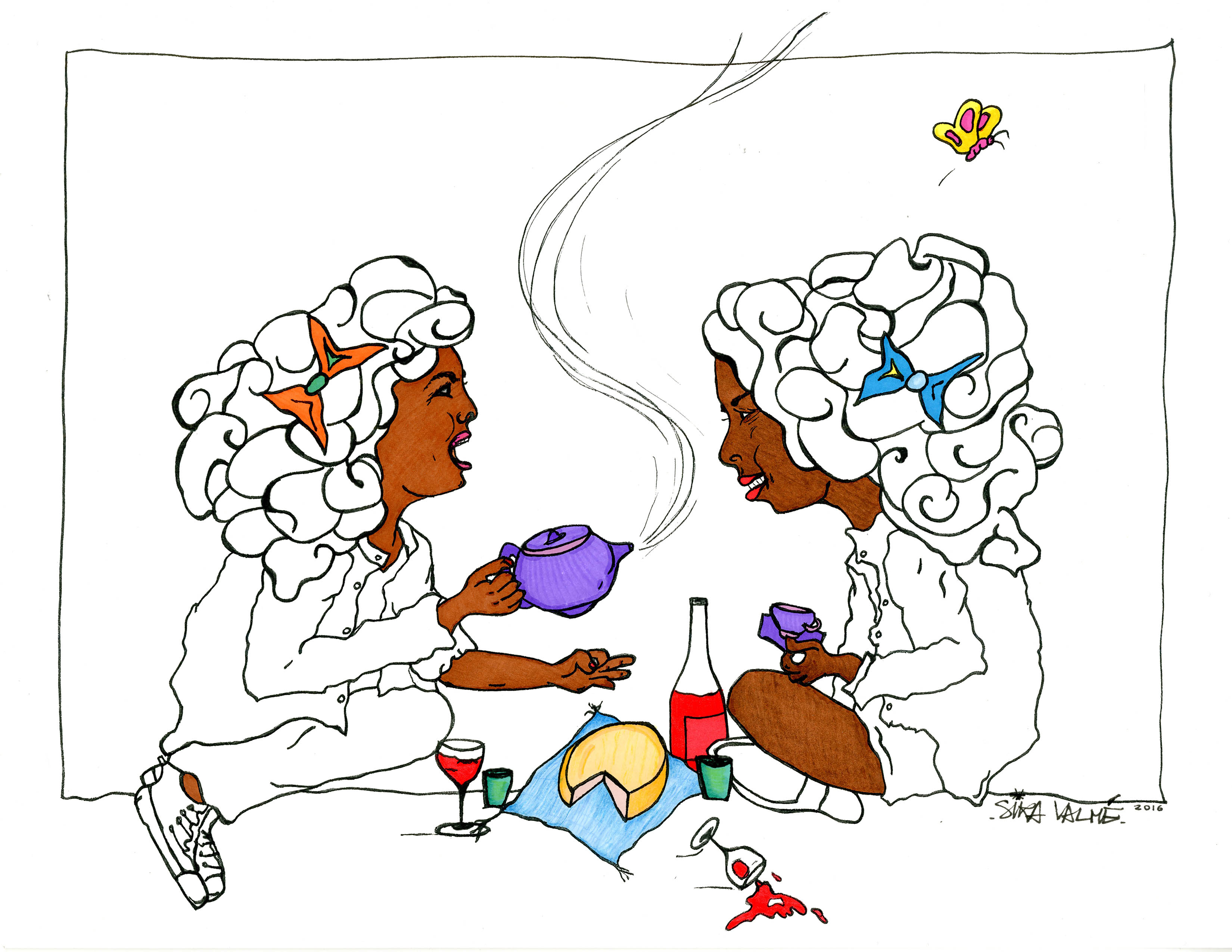


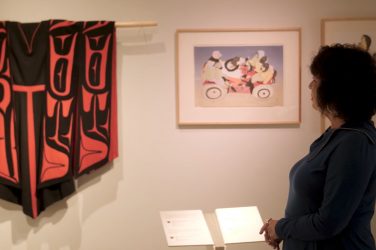
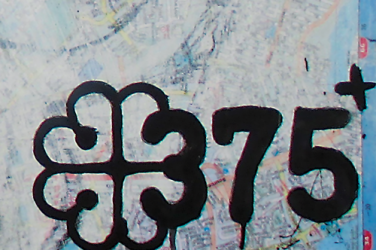
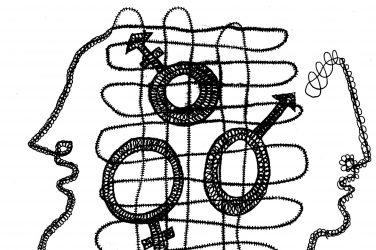
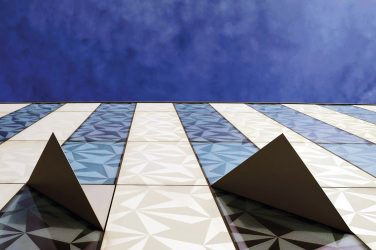
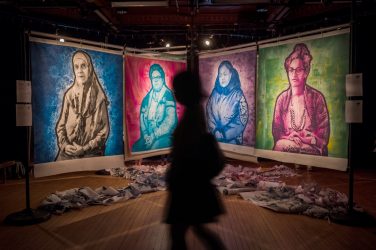
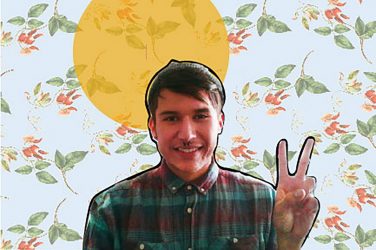
Show Comments (0)